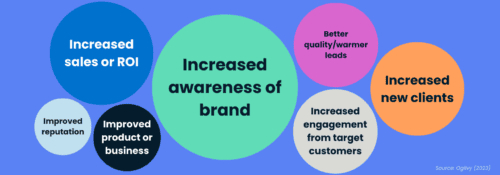What Is Coalition Building and How Can It Help Create Change?

What Is Coalition Building?
Coalition building brings together different groups to achieve a common goal.
It happens most frequently when different individuals or organizations share similar goals, values, or interests. By combining resources, the collective effort becomes more powerful than each entity acting on its own.
We hear about coalitions often in areas such as politics or governmental affairs, such as a coalition effort for peacekeeping efforts in an area where several countries participate.
Coalitions come together for a variety of reasons but they share a set of traits:
- Coalition members act together as group
- Coalitions form for specific, and often limited, reasons
- They work together to advance a common cause
- They manage by consensus but outside of any organization’s structure
- They have no formal structure
- Participation is voluntary
- Efforts focus externally
Coalitions form to increase power when they believe working together with amplify their voices or lead to better results.
How to Create a Successful Advocacy Strategy
Developing an advocacy strategy starts with bringing together the parties that will join the coalition. When you’re trying to figure out how to create a successful advocacy strategy to advance your issue, it will take a commitment to planning and execution.
1. Set Goals
You need to set specific goals that go beyond platitudes. The more specific your “ask” is, the easier everyone will be able to measure progress towards the goal. Involve all the key stakeholders to come to a consensus on the target.
2. Brand Your Message
The way you frame your message can determine whether it ultimately becomes successful in capturing people’s attention. The branding of your premise should be instantly understood when people see it or hear it.
“Giving Tuesday” is an excellent example of easy-to-understand branding, which tells people exactly what to do. It has now raised more than $1 billion for a coalition of non-profit community organizations.
3. Broaden Your Coalition
Successful advocacy campaigns have one thing in common: passionate, broad-based coalition building. Examine who is already involved in the cause, and who else needs to be added. It helps to look at the resources you will need and recruit others that can supply the support required.
4. Develop a Timeline for Measurement
Successful campaigns have a beginning, middle, and end. It’s essential to create a timeline with various checkpoints to track against goals. If it’s not working at the key milestones, it’s time to revisit the strategy.
5. Execute Communication Strategies
All the planning in the world won’t be successful if you can’t effectively convey the message. You’ve got to spread the word and encourage people to take action.
Using Digital Advocacy for Successful Campaigns
The good news is that it’s never been easier to spread the message online due to the prevalence of digital advocacy tools.
- Crowdsourcing for fundraising
- Online petitions
- Social media
- Websites and landing pages
- Digital advertising
- Content marketing
- Video
Campaigns should create strong content that advocates for your position capitalizing on your brand messaging and planning. Each piece of content should tell part of the story with a consistent advocacy message, including what action you want the consumer to take. Bringing together groups and building a coalition can be an effective way to get your message heard and make your initiative a success. Pool your resources, coordinate your messaging, and make a bigger impact.
Remember, you can’t do this work alone. Without a well-functioning coalition, your message will get stuck, your mission will be stopped, and your reach will be limited. Go farther with a strong coalition that multiplies your important issue.









